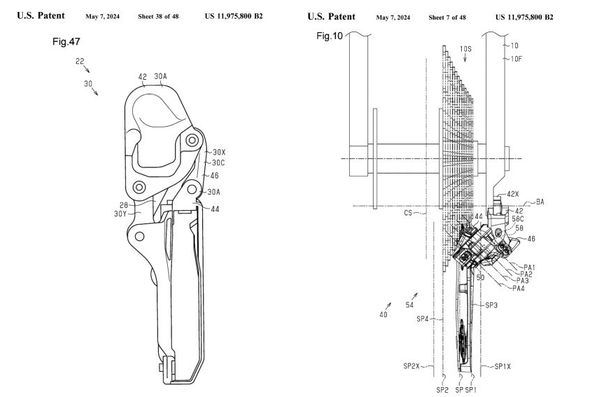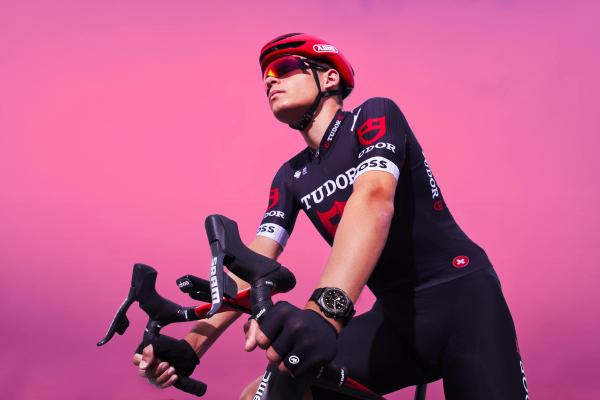Cycling cleat problems and should I swap my tyres? - GCN Tech Clinic
Your bike tech queries and issues sorted by our experts, Ollie Bridgewood and Alex Paton
Alex Hunt
Junior Tech Writer
Alex Paton and Ollie Bridgewood are back in the Tech Clinic to shine some light on some of the questions that have had you scratching your head.
This week, the boys take a deeper look into tyre choice for a gran fondo, and how to get the right cleat position to prevent any pain whilst riding.
Read more: Waxed chain problems and tyres with no sealant - GCN Tech Clinic
How often do I need to service cup and cone bearings?
Cup and cone bearings use loose ball bearings inside the hub that sit in a cup and are tensioned by a cone pressing against them. The predominant factor that will influence how long you get between services is how well the hubs are sealed. Better seals will keep the dirt and contaminants out and keep the grease in.
The duration between services can vary wildly, even on the same wheels, so it is hard to give a ballpark figure but around once a year as a guide unless there are any other reasons to do this sooner. The best course of action is to routinely give the hubs a check by spinning the wheels in your hands and feeling how smooth – or not – the bearings feel and by applying some lateral pressure to the axle to check for any play.
Will changing from a winter tyre to a race tyre improve my finish time for a gran fondo?
Fitting a racier tyre to your bike could save you a considerable amount of time over the course of a gran fondo. For the example in this question of a 235km course with an expected ride time of 12 hours, swapping from winter to summer tyres could save you tens of minutes. If the conditions are looking suitable swapping to a faster tyre would be a no-brainer with the only consideration being the reduction in puncture protection.
Unless there is any overwhelming reason as to why a slower, heavier tyre would be more suited to the event, opting for a faster tyre like the Pirelli P Zero would always be the better choice. Even race tyres, especially if they are set up tubeless, can now handle a fair amount of wear without puncturing.
My cleats are in identical positions but I am having issues with the position of one and not the other
When it comes to setting your cleat position the first thing to do is disregard the markings on the sole of the shoe. Very seldom are they reliable in their positioning. The best way to get a genuinely identical cleat position is to either get a professional bike fitter to set your cleats or spend some time physically measuring the position.
The other thing to consider is whether you actually need an identical cleat position. Our bodies are not symmetrical and slight imbalances in our leg structure or our feet can mean that we need a slightly different cleat position for each foot. Instead of focusing on getting them to match perfectly, find a cleat position that feels comfortable.
I’ve been told not to replace my bottom bracket unless I have any issues because the one in my bike is a better quality than newer ones, is this true?
When it comes to replacing your bottom bracket, we are in agreement with that advice and would suggest leaving your current bottom bracket in place until you run into any issues, roughness or play. One of the things with press fit bottom brackets in particular is that over time the constant fitting and removal of the bearings can cause the bottom bracket shell to open out a little making for a less snug fit. This can lead to more creaking when you ride. If the bottom bracket has no issues we would leave it in place and enjoy the fact that it is one less thing to keep on top of.
Can I fit a 52-tooth outer ring on my 50/34 105 crankset without needing to change anything else?
This depends on how your bike is configured, most specifically the length of your chain. Although fitting a larger chainring is absolutely fine you might find that in doing so the amount of chain in the system is not sufficient for the derailleur to work without being over-extended. If this is the case we would advise fitting a new chain with a link or two more depending on the specifics of your bike.
Although you can just upgrade the outer ring, if you are looking to increase one chainring we would suggest upgrading the inner ring too. If you leave the inner ring as a 34 the jump between the two can be very pronounced and can also be hard work on the derailleur to move the chain up onto the larger ring.
Is it possible to use a 700c x 28mm inner tube in a 650b x 47mm tyre?
Theoretically, this might work. However, even if this were to be used successfully it would cause the inner tube to stretch to the point that it would be a lot thinner than it was intended to be. Ultimately this would mean the risk of getting punctures is far higher than if the correct inner tube was fitted.
If it is the size of the 650b inner tube that is the cause for concern we would suggest looking at investing in a TPU inner tube. These are more costly than a classic butyl tube but they fold down incredibly small meaning that you could then easily fit the correct tube in your jersey pocket safe in the knowledge that in the event of a puncture you are well equipped to deal with it.
Why are climbing vs aero bike tests always done in isolation rather than in a group setting like how most of us ride?
This is a good question as most of us do not tend to head out and ride flat out on our own up climbs or along perfectly flat roads. It would potentially make more sense to the consumer for a test like this to be done in a simulated group as this would far closer replicate the average ride. The issue with this would be the ability to accurately and repeatedly replicate the test conditions. With most forms of testing the aim is to reduce the amount of variables down to as few as possible, this is why bikes are tested in ‘TT-like’ conditions as the brand is very easily able to confidently repeat the test again and again.
Do you have a tech question you want answered? You can leave it under the comments of this YouTube video or in the comments section at the bottom of this article.










.jpg?w=600&auto=format)
